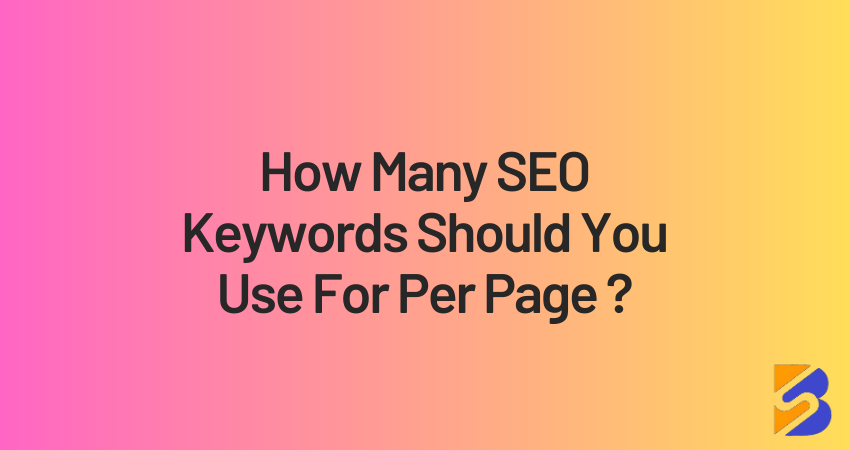SEO keywords are a vital part of any online marketing strategy. They help you rank higher in search engines, which means more traffic and more leads. Choosing the right keywords and strategically incorporating them into your content can greatly improve your chances of ranking higher in search engine results pages (SERPs). However, finding the right balance between using enough keywords to optimize your page and overstuffing it with irrelevant terms can be a challenge. So, how many SEO keywords should you use per page?
In general, you should aim to use one to three SEO keywords per page. This will help you rank higher in search engines without making your content feel spammy.
If you’re writing a long piece of content, you can use more keywords. Just be sure to use them naturally and sprinkle them throughout your content.
If you’re targeting highly competitive keywords, you may need to use more keywords. Just be sure to do your research and choose keywords that are relevant to your audience.
Finally, consider the intent of your audience. If you’re writing a blog post to educate your audience, you can use fewer keywords. But if you’re writing a sales page, you may need to use more keywords to convince your audience to take action.
Whether you’re a small business owner or a Search Engine Optimization agency in Ahmedabad, this guide will help you make informed decisions about keyword usage.
The Right Number of SEO Keywords for Your Page
When it comes to optimizing your web page for search engines, finding the right balance of SEO keywords is crucial for driving organic traffic and improving search rankings. Here’s a concise guide to determining the optimal number of SEO keywords for your page:
Quality over Quantity:
While it may be tempting to stuff your content with as many keywords as possible, it’s crucial to understand that search engines have evolved. They prioritize the quality and relevance of content over keyword density alone. Google’s algorithm has become more sophisticated in identifying natural language patterns and user intent. Thus, the focus should be on providing valuable and engaging content that satisfies users’ needs, rather than just aiming to rank for a specific set of keywords.
One Focus Keyword per Page:
To maintain clarity and maximize the effectiveness of your SEO efforts, it’s recommended to target one primary focus keyword per page. This keyword should accurately represent the core topic of your content. By doing so, you allow search engines to easily understand the purpose of your page and display it in relevant search queries. Additionally, optimizing a page for a single keyword helps you craft a more focused and comprehensive piece of content, delivering a better user experience.
Long-Tail Keywords: The Secret Sauce
Long-tail keywords are more specific and longer phrases that users often search for. These keywords have lower search volumes compared to broader terms but often exhibit higher conversion rates. Incorporating long-tail keywords in your content allows you to tap into a niche audience that is more likely to engage with your offerings. By targeting multiple long-tail keywords related to your main topic, you can cover a broader range of user queries and attract highly relevant traffic to your website.
Strategic Keyword Placement
Once you’ve identified your focus keyword and potential long-tail keywords, it’s time to strategically place them within your content. Here are some key areas to consider:
- Title Tag: Include your focus keyword in the title tag, preferably towards the beginning, to signal its relevance to search engines.
- Meta Description: Craft an enticing meta description that incorporates your focus keyword and encourages users to click through to your page.
- Heading Tags: Use heading tags (H1, H2, etc.) to structure your content and include your focus keyword in at least one heading tag.
- Body Text: Naturally incorporate your focus keyword and relevant long-tail keywords throughout the body of your content. Aim for a keyword density of around 1-2%, ensuring that your content remains readable and engaging.
- Image Alt Tags: Optimize your images by including descriptive alt tags that incorporate your keywords when applicable. This enhances the accessibility and searchability of your content.
Conclusion
The key to successful keyword usage in SEO lies in maintaining a balance between optimization and user experience. By focusing on one primary keyword per page, utilizing long-tail keywords, and strategically placing them within your content, you can enhance your chances of ranking higher in search results while providing valuable content to your audience. Remember, SEO is an ever-evolving field, so monitoring keyword performance and adapting your strategy accordingly is essential. Keep experimenting, analyzing, and refining your approach to stay ahead in the competitive world of SEO.



